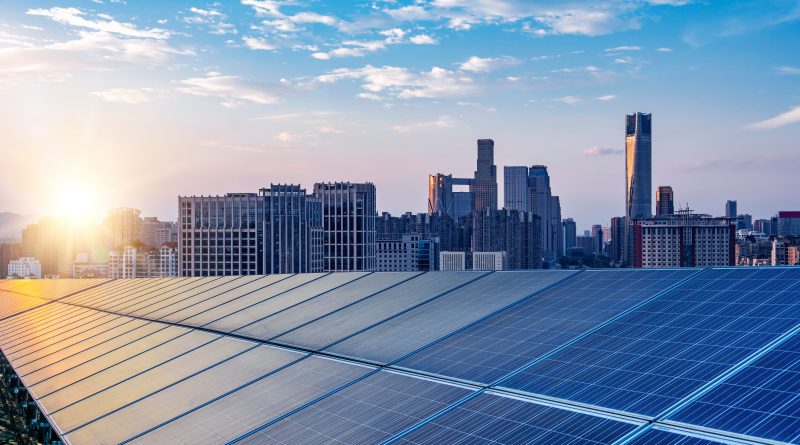India To Develop 12 New Industrial Cities To Boost Manufacturing
India is poised to embark on an ambitious journey to develop 12 new industrial cities, a significant stride towards bolstering its manufacturing sector. The Department for Promotion of Industry and Internal Trade (DPIIT) is set to seek Cabinet approval for this transformative project, which forms part of the National Industrial Corridor Development Programme (NICDP). Aimed at creating world-class infrastructure and enhancing the ease of doing business, this initiative is expected to attract substantial investments, generate numerous employment opportunities, and contribute to India’s economic growth.
The proposed industrial cities will be strategically located across various states, designed to feature modern industrial ecosystems equipped with state-of-the-art infrastructure, seamless urban connectivity, and sustainable practices. These cities will not only boost the manufacturing capabilities of the nation but also align with the government’s vision of ‘Atmanirbhar Bharat’ (self-reliant India), promoting domestic production and reducing dependency on imports.
The National Industrial Corridor Development Programme
The National Industrial Corridor Development Programme (NICDP) is a strategic initiative aimed at transforming India into a global manufacturing hub by developing integrated industrial townships. Spearheaded by the DPIIT, the programme seeks to create a robust industrial infrastructure that supports advanced manufacturing and high-end logistics. The NICDP emphasizes the development of state-of-the-art infrastructure, including industrial zones, smart logistics, and efficient transportation networks. These components are crucial for enhancing productivity and competitiveness.
Furthermore, the NICDP aims to streamline regulatory processes and improve the business environment, making it easier for domestic and international companies to operate in India. Sustainability is a core focus of the programme, with plans to incorporate green technologies and practices in the development of industrial cities. This includes energy-efficient buildings, waste management systems, and the use of renewable energy sources. By fostering a conducive environment for manufacturing, the NICDP aims to spur economic growth, create jobs, and increase exports. The programme is expected to attract significant foreign direct investment (FDI), boosting the overall economic landscape.
The DPIIT’s role involves coordinating with various stakeholders, including state governments, private sector players, and international partners, to ensure the successful execution of the programme. Seeking Cabinet approval is a critical step in moving forward with the implementation phase, which will include land acquisition, infrastructure development, and the establishment of industrial clusters.
Key Features of the Proposed Industrial Cities
The 12 new industrial cities will be designed to meet the highest standards of modern industrial ecosystems. These cities will house cutting-edge manufacturing units equipped with the latest technologies and automation systems. The manufacturing facilities will cater to various sectors, including electronics, automotive, textiles, and pharmaceuticals. Efficient logistics infrastructure, including smart warehousing and seamless transportation networks, will be a hallmark of these industrial cities, facilitating the smooth movement of goods and reducing logistics costs.
Sustainability will be at the forefront of the city planning process. This includes the use of renewable energy sources, green building practices, and effective waste management systems. The goal is to create eco-friendly industrial zones that minimize environmental impact. The cities will be well-connected to major urban centers through highways, railways, and airways, ensuring efficient movement of goods and people and enhancing overall productivity.
In addition to industrial facilities, the cities will offer residential, commercial, and recreational amenities. This holistic approach ensures a high quality of life for workers and residents, making these cities attractive places to live and work. The modern infrastructure and business-friendly environment are expected to attract significant investments from both domestic and international players, driving economic growth and creating numerous job opportunities.
The development of these industrial cities is strategically aligned with the government’s vision of ‘Atmanirbhar Bharat.’ By enhancing domestic manufacturing capabilities, India aims to reduce its reliance on imports and become more self-sufficient. This initiative is expected to generate a significant number of jobs, both directly in the manufacturing units and indirectly through supporting services, helping to alleviate unemployment and improve living standards.
The state-of-the-art infrastructure and business-friendly policies are expected to attract substantial investments from both domestic and international companies, boosting economic growth and enhancing industrial competitiveness. By improving manufacturing capabilities and reducing production costs, the new industrial cities will enhance India’s export competitiveness, contributing to a positive trade balance and strengthening the economy.
The industrial cities will promote regional economic development by providing infrastructure and job opportunities in less developed areas, helping to reduce regional disparities and promote balanced economic growth. The integration of advanced manufacturing technologies and sustainable practices will drive innovation and technological advancements in the industrial sector, enhancing productivity and supporting long-term economic growth.
Sources:
